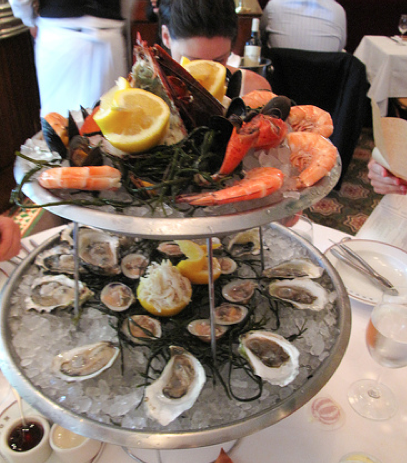So Shellfish! The Great Moon Snail Attack
by Mary Phillips-Sandy

Here is everything you need to know about the moon snail epidemic presently raging in eastern Maine.
Moon snails are not twee pearlescent creatures that might rally to the aid of a Disney heroine. Moon snails are vicious nocturnal predators of the Naticidae family. You do not want to encounter a moon snail in a dark alley or mud flat, especially if you are a bivalve.
If you are a bivalve and you encounter a moon snail in a dark mud flat, expect to have a hole bored into your shell faster than you can say whatever it is clams say when they are about to die. Moon snails are equipped with power-drilling probosci and lethal corrosive acid secretions.
There will follow a brief period of being sucked through a hole and eaten alive, without even the dignity of a lemon wedge.
If you are a human and you’ve encountered a semicircular mass of compressed sand on a beach, congratulations! You’ve found a sand collar, which is a deposit of moon snail embryos, thousands of them, just waiting to burst forth from their jellylike egg sacs and feed.
Some bad news, however, if you are a human who appreciates bivalves for lunch or for income: when moon snails go on extended late-night binges they leave precious few clams behind. Up in Lubec, Maine, where clamming is an important industry, moon snail destruction has compounded the woes caused by red tide and depressed seafood prices: current statistics indicate that the Lubec clam harvest, valued at over $560,000 in 2006, is now worth $39,000.
Lubec sits on a high peninsula overlooking New Brunswick in the region known as Down East. The nearest Wal-Mart is an hour away. Once upon a time when sardines were all the rage it was a boom town of canneries; the last sardine cannery in the United States was down Route 1 in Prospect Harbor, and it closed in April. The world ate its fill and moved on to other delicacies. Bacon, I guess, and boneless skinless chicken breasts.
Places like Lubec are typically described as “struggling” but a better word is “trying.” What else can you do when you are a town of 1,500 people on the easternmost spit of land in the continental United States and no one eats canned sardines any more? What do you do when you are fifty or sixty years old and you know, standing there in your waders, that imports make up 80 percent of American seafood consumption? Right now in Lubec there are some bed and breakfasts, some shops, some lobstermen, some artists, people who rake blueberries or make wreaths or repair houses, depending on the season. There are people who go out on the water in the middle of the winter to drag for sea urchins, there are people who’ve figured out how to farm salmon in Cobscook Bay, there’s a small saltworks. You do what you have to do, that’s a fact of life Down East and anywhere in rural America these days, but Jesus H. the last thing you need is a goddamn gastropod eating your livelihood while you sleep.
Or, if you cannot stop the gastropod from eating your livelihood, perhaps the solution is to make eating the gastropod your livelihood. As one optimistic Lubec man told a reporter, “there’s a market for moon snails somewhere in the world.” Indeed there is! According to a sushi restaurant in New Haven, moon snails are a) “considered a delicacy and a natural Viagra in Norway” and b) can be grilled and served with lime juice and soy sauce. Why not? Some genius thought to boil a lobster.
Maine will have to act quickly if it wants to stake a claim in the world moon snail market, though. China and Cameroon are already wholesaling the dickens out of these things.
Mary Phillips-Sandy lives in Portland (not Oregon).
Photo by snackfight from Flickr.
